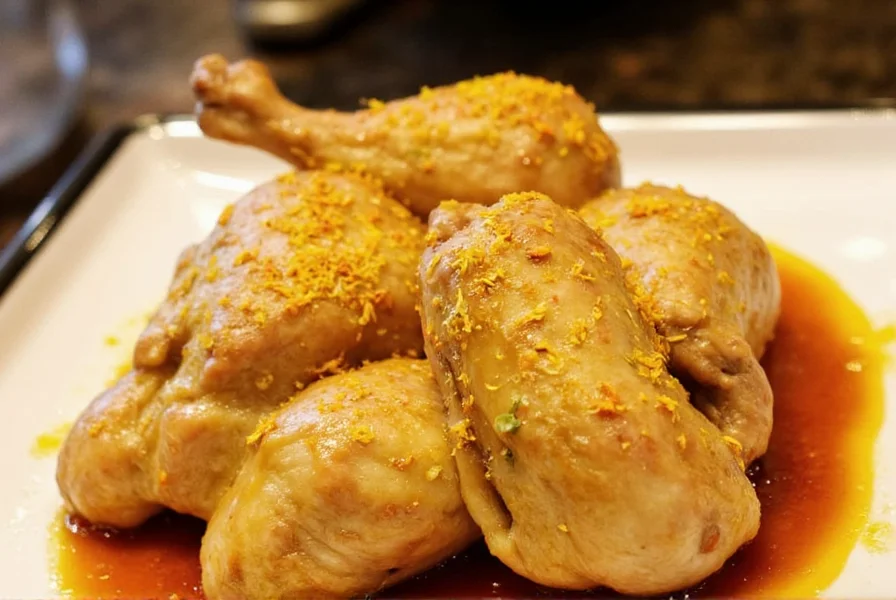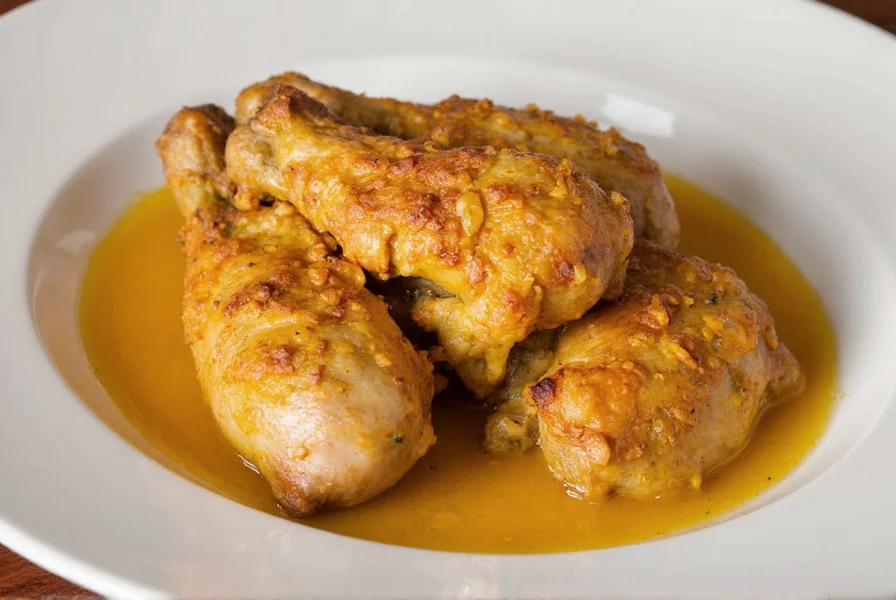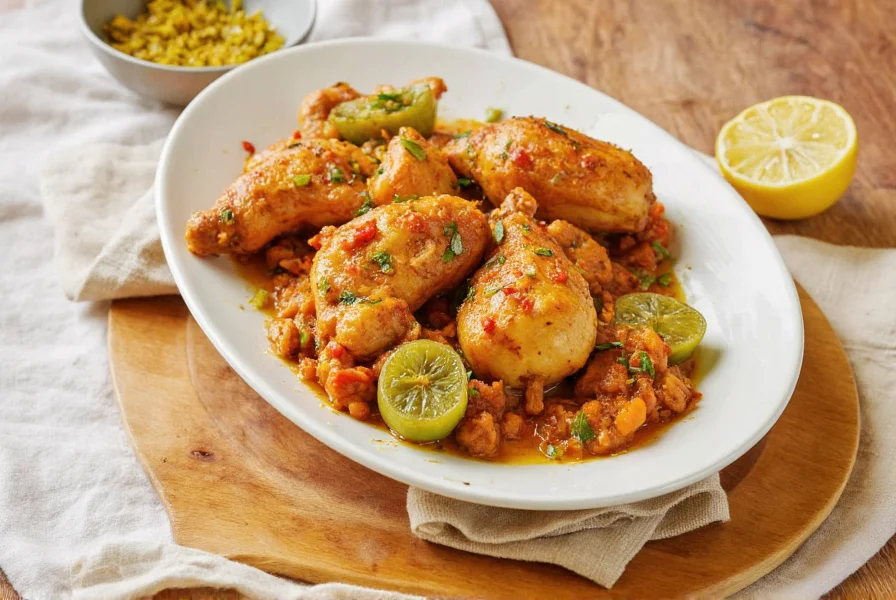Saffron chicken represents one of the most sophisticated preparations in global cuisine, where the precious spice elevates humble poultry to gourmet status. This dish showcases culinary traditions spanning multiple cultures, each with distinctive approaches to incorporating saffron's unique properties. Understanding how to properly work with saffron separates authentic preparations from disappointing imitations that waste this valuable ingredient.
The Essence of Saffron in Chicken Dishes
Saffron's distinctive characteristics make it ideal for chicken preparations. The spice contains crocin (providing vibrant color), picrocrocin (contributing bitter notes), and safranal (delivering aromatic properties). When properly infused, saffron transforms chicken dishes with:
- A luminous golden-yellow hue that enhances visual appeal
- A complex flavor profile balancing floral, honey-like sweetness with subtle earthiness
- An aromatic quality that intensifies during cooking
Unlike many spices, saffron requires careful preparation. Simply adding threads to a dish won't release their full potential. The optimal method involves steeping 15-20 threads in 2-3 tablespoons of warm liquid (water, broth, or milk) for 15-20 minutes before incorporating into your chicken recipe. This extraction process maximizes color transfer and flavor development.

Cultural Origins and Traditional Preparations
Saffron chicken appears in culinary traditions across three continents, each with distinctive approaches:
| Cuisine Tradition | Signature Preparation | Distinctive Elements |
|---|---|---|
| Persian (Iranian) | Morgh-e-Tahchin | Rice cake with saffron-marinated chicken, yogurt, and egg |
| Spanish | Pollastre amb Samfaina | Chicken with saffron-infused vegetable stew (similar to ratatouille) |
| Indian | Kashmiri Chicken | Creamy tomato-based curry with saffron and aromatic spices |
| Moroccan | Djaj M'qualli | Chicken tagine with saffron, turmeric, and preserved lemon |
These diverse preparations demonstrate how saffron adapts to different flavor profiles while maintaining its distinctive character. Persian preparations often feature saffron with yogurt and rice, Spanish versions incorporate it into sofrito bases, Indian interpretations blend it with cream and tomatoes, while Moroccan cuisine combines it with preserved lemon and warming spices.
Essential Techniques for Perfect Saffron Chicken
Mastering saffron chicken requires attention to specific techniques that maximize the spice's potential:
Proper Saffron Infusion
The critical first step involves proper saffron infusion. Crush 15-20 threads gently between your fingers before adding to warm (not boiling) liquid. Allow 15-20 minutes for complete extraction. For richer color and flavor, some chefs toast threads lightly in a dry pan before crushing.
Marination Science
When marinating chicken with saffron:
- Combine infused saffron with acidic components (lemon juice or vinegar) to help the spice penetrate
- Include fat (olive oil or yogurt) to capture saffron's oil-soluble compounds
- Marinate for 2-4 hours (not longer, as acidity can begin to cook the chicken)
Cooking Temperature Control
Saffron's delicate compounds degrade at high temperatures. For best results:
- Add saffron infusion during the final 15-20 minutes of cooking
- Maintain cooking temperatures below 300°F (150°C) when possible
- Never boil saffron-infused dishes vigorously

Flavor Pairing Principles
Saffron's distinctive profile pairs beautifully with specific ingredients that enhance rather than compete with its delicate nature:
Complementary Flavors:
- Citrus elements (lemon zest, orange blossom water)
- Mild aromatics (garlic, shallots, fennel)
- Creamy components (yogurt, coconut milk, light cream)
- Subtle herbs (dill, parsley, chives)
Flavor Combinations to Avoid:
- Overpowering spices (cayenne, excessive black pepper)
- Strongly flavored meats (bacon, chorizo)
- Excessive acidity that masks saffron's nuances
Common Mistakes in Saffron Chicken Preparation
Even experienced cooks make these frequent errors when preparing saffron chicken:
- Using powdered saffron - Often adulterated or stale; always use whole threads
- Adding saffron too early - Degrades delicate compounds during prolonged cooking
- Insufficient steeping time - Results in weak color and flavor extraction
- Over-marinating - Acidic components can begin to cook the chicken
- Using insufficient saffron - Too little won't produce noticeable flavor impact
Serving and Presentation Tips
The visual presentation of saffron chicken significantly enhances the dining experience. The golden hue should be vibrant but natural-looking. Serve in white or neutral-colored dishes to showcase the color. Garnish with:
- Fresh herbs (flat-leaf parsley or chives)
- Edible flowers (nasturtiums or calendula)
- Additional saffron threads for visual emphasis
- Lemon wedges for color contrast
Pair saffron chicken with complementary side dishes that won't compete with its delicate flavor profile. Steamed basmati rice, saffron-infused couscous, or simple roasted vegetables work best. Avoid strongly flavored accompaniments that would overshadow the saffron.
Storage and Reheating Guidelines
Proper storage maintains saffron chicken's quality:
- Refrigerate within 2 hours of cooking in airtight containers
- Consume within 3 days for optimal flavor
- Freeze for longer storage (up to 2 months)
When reheating, use gentle methods to preserve saffron's delicate compounds:
- Steam or use a double boiler rather than direct heat
- Add a splash of broth or water to prevent drying
- Never microwave on high power
- Consider adding a few fresh saffron threads during reheating
Frequently Asked Questions
How much saffron should I use for chicken dishes?
For four servings of chicken, use 15-20 saffron threads (approximately 0.1 grams). This provides sufficient color and flavor without overwhelming the dish. Remember that saffron intensifies as it cooks, so it's better to start with less and adjust if needed.
Can I substitute turmeric for saffron in chicken recipes?
Turmeric provides similar yellow color but lacks saffron's distinctive flavor profile. While turmeric can mimic saffron's visual appearance, it cannot replicate the complex floral, honey-like notes. For authentic saffron chicken, substitution isn't recommended. If absolutely necessary, use 1/4 teaspoon turmeric plus a pinch of paprika for color, but recognize the flavor will differ significantly.
Why is my saffron chicken not turning golden yellow?
Several factors affect saffron's color development: old or low-quality saffron, insufficient steeping time, cooking at too high temperature, or adding saffron too early in the cooking process. Ensure you're using fresh, high-quality threads, steep them properly in warm liquid for 15-20 minutes, and add the infusion during the final 15 minutes of cooking at moderate temperatures.
How can I tell if saffron is fresh and high quality?
Fresh, high-quality saffron threads should be deep red with orange tips, have a strong floral aroma, and release a rich golden color when steeped in warm water. Avoid threads that appear dull, brittle, or predominantly yellow. When rubbed between fingers, quality saffron leaves a golden-yellow stain. The threads should feel slightly moist, not dry and crumbly.
What's the best cut of chicken for saffron preparations?
Bone-in, skin-on chicken thighs work best for saffron dishes as they retain moisture during cooking and absorb flavors well. The fat content helps carry saffron's oil-soluble compounds. Breast meat can be used but requires careful cooking to prevent drying. Whole chicken pieces with bone and skin provide the most flavorful results as the bone marrow and skin fats enhance saffron's aromatic properties.











 浙公网安备
33010002000092号
浙公网安备
33010002000092号 浙B2-20120091-4
浙B2-20120091-4